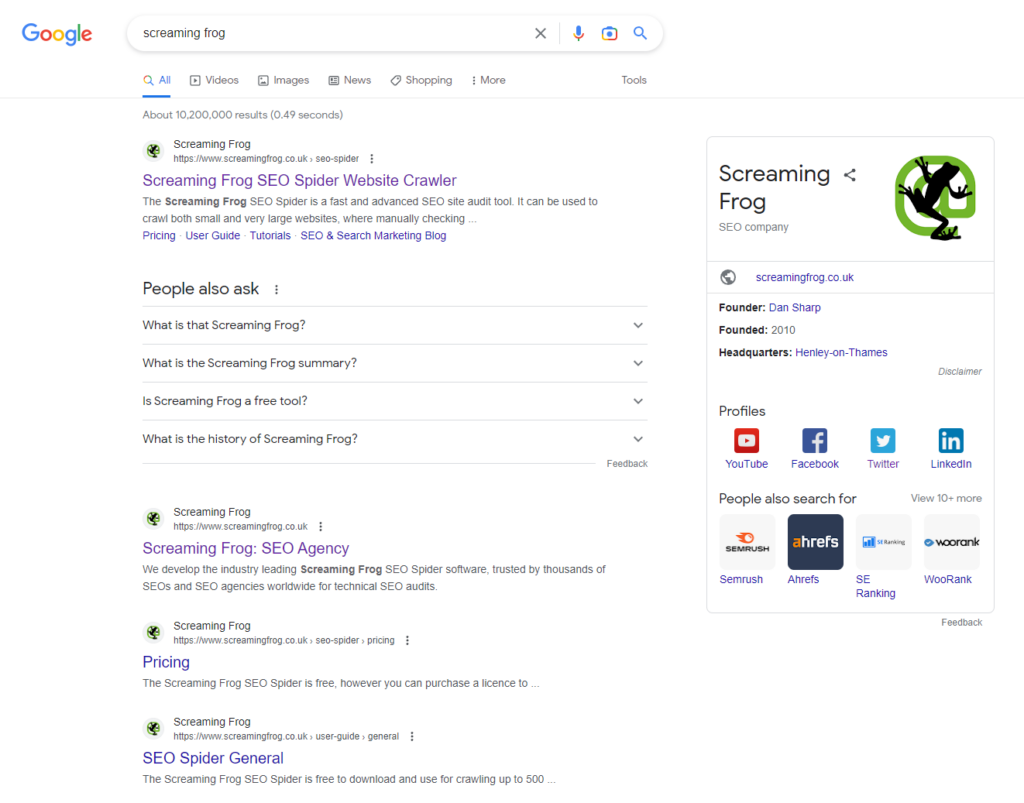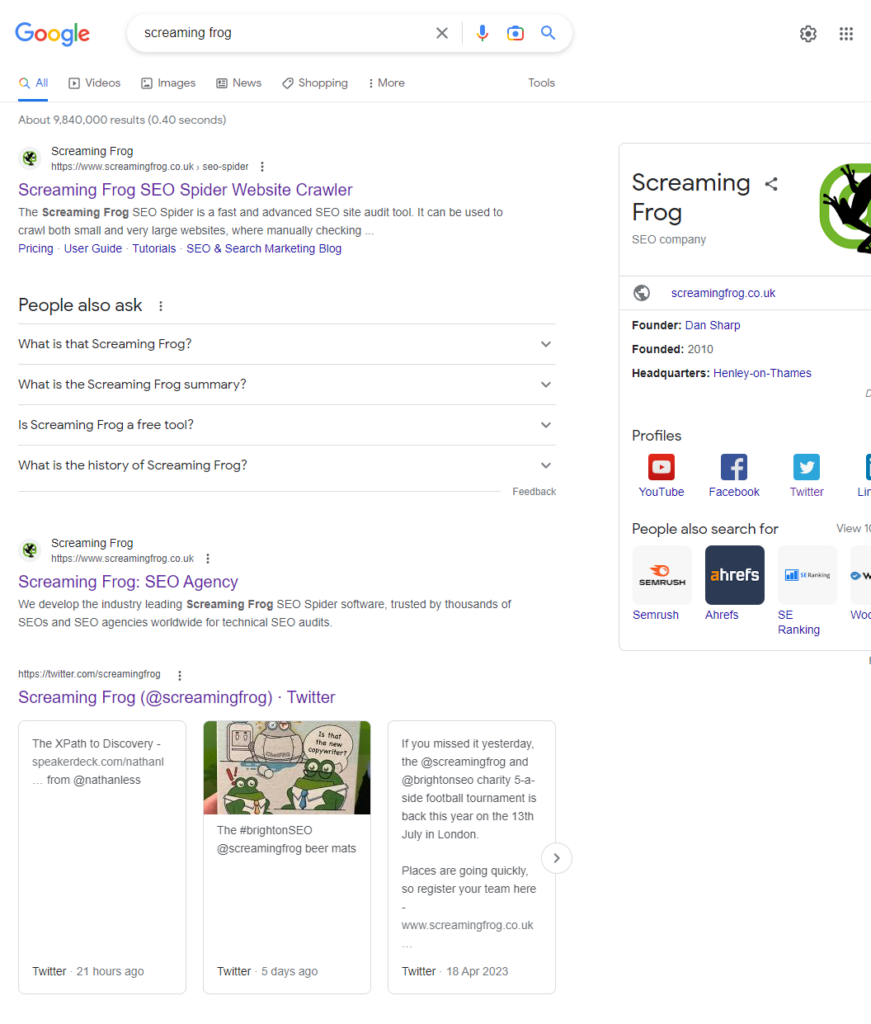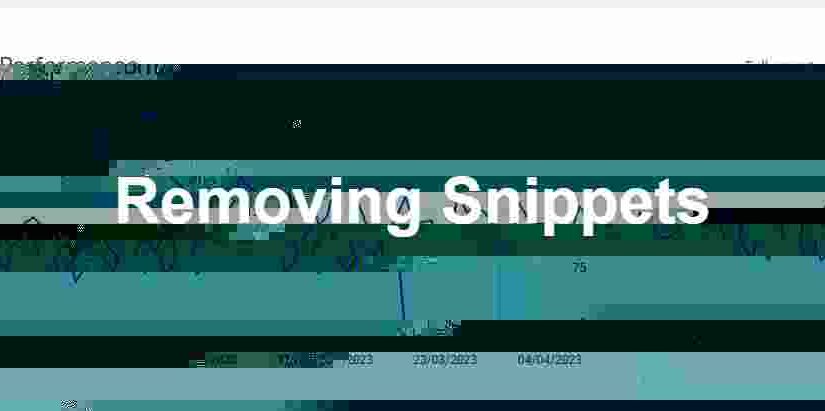There is already pretty public discussion about this method, I’m just exploring some potential misuses to (maybe) encourage a fix. It’s really not my discovery:
- https://support.google.com/webmasters/thread/207032767?hl=en
- https://twitter.com/GrindstoneSEO/status/1638575415714521088
- https://web.archive.org/web/20230118052028/https://www.reddit.com/r/SEO/comments/10evjif/story_time_how_i_completely_tanked_my_competitors/
- https://www.seroundtable.com/google-remove-outdated-content-tool-remove-competitors-35167.html
If you’d rather not read this post, I’ll lead with the conclusion – the Remove Outdated Content Tool (https://search.google.com/search-console/remove-outdated-content) can be used for removing other website’s featured snippets.
It also, mysteriously, seems like it might be impacting ranking, which it shouldn’t.
Now you can share as if you’ve read the post properly.
Demonstrating Subtractive Changes
To “Remove Outdated Content”, you need to give Google a URL.
The URL does not need to be outdated.
For Google to accept that the URL is outdated, you need to demonstrate a small subtractive change between the current page and the cached copy:

This means text which is present in the cache, but is now no longer on the page is what you’re looking for.
There are a few ways to do this. For example, if there is an embedded feed on the page, then content will frequently be dropping off as new content is created.
If there is the ability to add UGC, then frequently there will be the opportunity to remove UGC – e.g. delete what you’ve added before reporting the page as outdated.
Getting frustrated being unable to trigger this? You just have to get creative and do a little lateral thinking.
“It doesn’t work like that, it just clears the cache”
Well, yes, that sounds right, but it feels like something weirder might be happening:

(If you’re wondering why it jumps before the drop, it’s when I deindexed my website for the latest blog post. Average position “improved”)
It’s pretty clear that the day Google recognised this URL as outdated, there was a dramatic ‘fall’ in average position.
Reported clicks and impressions are basically normal for the period (I think this is probably more indicative of featured snippets being lost, than a true change in ranking).
The ‘outdated’ URLs of course remains indexed. Initially I thought the fluctuation of rankings were due to the URLs being technically indexed-without-content, like when you block a URL using robots.txt. It looks pretty similar:

But searching for exact quotes or text from the dropped URLs has them show up, just without a snippet:

Here we can see the URL is competing rather poorly given it’s relevance. My homepage was ranking above Twitter before I’d declared it outdated.
Exact searches show the content is still fully indexed, but the concern is that you may rank worse than expected for anything remotely competitive, and that your CTR suffers until the page is reindexed and a new snippet is created.
A few days later this the page was naturally recached and seemed to regain its snippets again when it’s shown:

But despite the ‘recovery’, there was still a request that could be cancelled:

Many of the URLs I’ve tested this with seem to have resulted in erratic, immediate, and consequential drops, even in cases where there is little competition otherwise for the URL.
This is likely coincidence, but if not, it would indicate that something more than dropping the cache / snippet is going on, at least until the page is recrawled / recached.
One avenue is that the absence of a meaningful snippet kills CTR, and this indirectly kills rankings. While I have opinions on this as a “ranking factor”, I think the behaviour is too immediate for that. There isn’t time to gather CTR as a signal on many of these terms.
More likely is snippet-less URLs generally have poor CTR, and this is being algorithmically reinforced when it comes to rankings. If the algorithm has learned that snippet-less or ‘outdated’ URLs are somehow bad, then there’s an incentive to downweigh them.
My current guess is that a small malus is applied to the URL as a result of being successfully reported. Sometimes this will be enough to impact ranking position. A single malicious user and Google agree that the content on the URL is out of date.
I cannot test this properly because I lack “real” websites I can do this against without behaving very badly. And as someone who prefers leisure to work, and finds writing is more of an itch to be scratched than a joy, I’m not realistically going to study this in any depth (if you have a rare salaried ‘research’ type position, please, do it for me). Feel free to debunk my hunch.
Anyway, on to the post.
Can You Remove Competitor Featured Snippets?
What I find interesting is that I’ve not actually dropped my original requests. The page managed to (eventually….) regain it’s position in the SERPs.
This feels like expiration of the request – which is just the tool behaving like it feels like it’s supposed to behave (though on site owner / reporter ends it’s still possible to “cancel”).
Anyway – here we can see a query which has recovered a snippet:

And by using the “minus{domain}” trick here we can see the next-in-line page for the featured snippet:

So what happens if literally anyone with a gmail declares my innocent URL as outdated?

Google’s decided that this query deserves a featured snippet, and it knows that my now outdated URL currently has the snippet. Or, it did:

Once my URL is outdated, the page still Ranks P1, but loses the ‘position zero’ snippet to the next-in-line once the request is approved.
Will it recover in time once the page is recached? It did before. What happens if we cancel those requests now?

Recovery is within a few hours after I cancel the request and impatiently submit the URL for re-indexing. The URL is once again eligible for the snippet:

I think it’s pretty clear that you can use this tool to temporarily disable competitor featured snippets.
Ok, anyone with a gmail can cause Google to think our pages are (temporarily) outdated to mess with them, how do we fix this?
If you have Search Console access you can see all attempts for the last 6 months made against your domain, successful or not:

Thankfully, you can just cancel them:

So, while this is bad, you just have to be vigilant, right?
Right?
Other People’s Websites:
But what if you didn’t have Search Console access? What if you couldn’t even get Search Console access?
Let’s try this on a term with decent volume – e.g. “Screaming Frog“
What a nice Twitter Snippet it would be a shame if s̥͕͝o̸͉̪̹̜͇m͏̬̥̤̺̭e͈͕͕t̬̣͈̺̪͕͇͞h͚̲̭̩̥̪i̡̹̬̫̬̳͎n̬͔̙̥͖g̱͖̤̺͉̯͖ ̮̺̺̯h̝͡a̫͚͎p͏̙͓p̙̻̦̦̖̘͡e̥̝̮n͓e̸̹͈d̹̪͔͓̣ͅ ̼̩̩̤t̬͔͕͙̠̼͈o̭̦ ͓̯̻͈̲̠ì͈̱̬͚t:

This carousel gets a good amount of impressions from the brand term.
Many SEOs are aware of this because they get a baffling spike of impressions to their website for the query ‘Screaming Frog’ (and uh, others) whenever their URL gets tweeted by the account and the tweet is pulled into this carousel.
Anyway:

Again – to get a snippet removed we need to show something that’s present in the cache, but not present on the current page. The best place to start was the final Tweet in that loads in the webcache:

This took a few attempts:
- “アユダンテ株式会社” ? Denied.
- flesh-and-the-power-it-holds ? Denied.
- forehead ? Denied.
- Forehead ? Denied.
- ※ ? Denied.
- @PolinaKogan ? Denied.
- Waiting a few hours and trying ‘Polina’ again?:

Within a few hours, the SERP changed quite dramatically. I saw the profile drop as low as the third page, and direct queries to surface the Twitter profile would show the bizarre snippet-less version:



But what’s more interesting is that this held for days.
If I had to guess around some of the variance I was seeing with what counted as a change, it would be that the length of page Google’s rendering for this check varies attempt to attempt (not a strongly held belief, another tweet would probably have done this).
The methodology there doesn’t make a great deal of sense, but my advice to the budding tool abuser is straightforward:
Believe in yourself.
Rejections are fast (refresh the page and you’ll see your attempt denied), but acceptance takes a few hours.
If the target URL switches to to pending for more than a couple of minutes you will more than likely be successful (every time this has happened for me, it’s been accepted).
There’s some lag between when snippets start to drop in Google, and when that message changes to accepted.
Over a week, I got very side-tracked writing this post. Several times a day during this period I was able to confirm that a) the Twitter profile seemed to be ranking very poorly and b) the carousel / rich result remained absent:

Given it was not really my account to play with, I cancelled the request:

A couple of hours later, the Twitter profile was back to ranking 3rd, and with the carousel:


I don’t think this is conclusive with regards to how these pages are ranked, but it certainly seems to turn off the snippet. The poor ranking may have been a coincidence. It may be that being ‘outdated’ makes some snippet types ineligible.
This seems quite solid anti-parasite SEO, so I’m sure that niche will be quite exciting until this is patched. Everyone working in the reputable subsector of online reputation management will also be thrilled.
And I guess this makes it clear that what is especially vulnerable to this is anything of yours built on someone else’s platform (please don’t let this be what you remember from this post – this is an incredibly boring take).
What Did We Learn?
While not as drastic as other types of negative SEO, theoretical or otherwise, it’s still pretty rough –
e.g. Imagine that there’s some time sensitive event like Black Friday happening (for example, Black Friday). There’s a deals holding page. There’s a hyper-competitive niche. Something gets removed from the page, or some text gets updated (e.g. the holding message). Perhaps your page is decked out with as much SERP grabbing structured data as possible. It’s not any more.
Even if rankings are stable, this is bad.
This might be one of those things that seems ‘fine’ from Google’s perspective. The sites do eventually recover? As long as someone doesn’t repeatedly submit the same URLs, it’ll be fine.
- If you have featured snippets, they are likely vulnerable to this technique, albeit temporarily.
- If you are attempting to rank for a seasonal event, you are likely very vulnerable to this technique, albeit for the entire duration of the season.
- If you are ranking on someone else’s platform, you are even more vulnerable to this.
My hope is that Google will properly investigate potential misuses of this tooling. If not, there are plenty more misuses to be surfaced.
(Twitter’s been awash with “Featured Snippets are Dead” over the last few days so it’s slightly less irresponsible to share this.)
Thanks!
I’d like to thank Duane for giving me a nudge on this, and apologise for taking so long to write this up.
